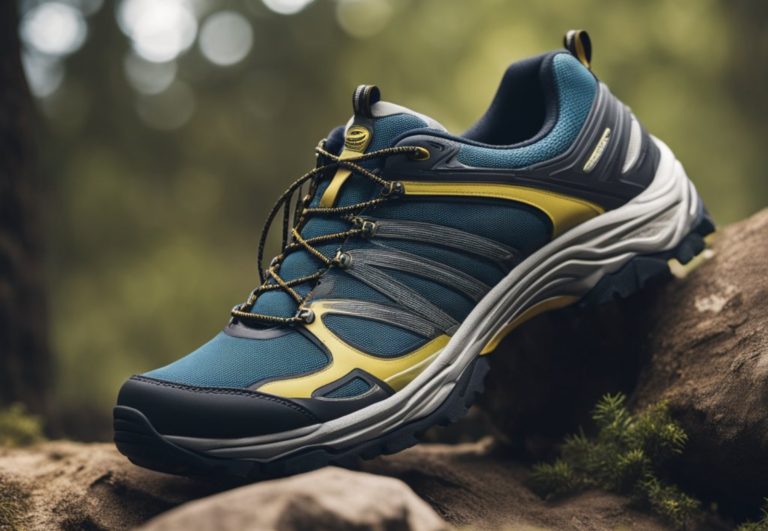The Importance of Trail Running Form: Keys to Optimal Performance and Safety
Trail running is an exhilarating sport that tests the boundaries of human endurance and agility. As a UESCA certified running coach with extensive experience in the wilds, I understand how crucial proper running form is for trail runners. It’s not just about speed; it’s about moving efficiently over varied terrain while reducing the risk of injury.
On rugged trails, each step matters. Maintaining good posture and a balanced stride helps navigate the constant ups, downs, and switchbacks. I teach runners to move in a way that conserves energy and allows for quick, nimble movements, which is essential for tackling long distances and challenging terrains.
Effective trail running technique involves more than just foot placement. Engaging your core, keeping your head up, and ensuring your feet land beneath you are key elements. These techniques help maintain stability and decrease the impact on the body, allowing you to enjoy the trails safely and with greater endurance.
Fundamentals of Trail Running Form

Posture: My experience tells me that maintaining an upright posture while trail running is essential. It’s important to keep the head stacked over the shoulders and the shoulders over the hips. This alignment conserves energy and ensures breathing efficiency.
Technique: Good form comes down to a smooth, natural gait. I advise runners to keep their steps light to minimize impact and stay nimble to navigate varied terrain. Lifting the knees and using the arms for balance is also part of good technique.
Efficiency: Running efficiency on trails is about conservation of energy. Land on the mid-foot under your center of gravity for stability and push off with purpose. Efficient use of energy helps maintain consistent pace and reduces fatigue.
Balance: I emphasize the importance of balance in trail running. A balanced stance allows quick adjustments to terrain changes. Strengthening core muscles is instrumental in achieving good balance.
Running Form Essentials:
- Keep eyes on the trail ahead to anticipate changes.
- Use a shorter stride to maintain control and stability.
- Engage core muscles for better agility and balance.
By focusing on these core aspects, trail runners can improve their performance while reducing the risk of injury.
Key Elements of Skilled Movement

In trail running, efficiency and injury prevention hinge on mastering certain key elements of movement. These elements enhance your running experience by ensuring a smooth interaction between your body and the unpredictable terrain trails often present.
Mastering Balance and Stability
Stability in trail running begins with a strong core, which acts as the foundation for your overall balance. To maintain stability, engage your core muscles consistently throughout your run.
This supports your spine and keeps your upper body centered. Additionally, focusing on hip strength is vital, as the hips play a crucial role in maintaining equilibrium, particularly when navigating uneven ground or switchbacks.
- Core muscles: Engaged
- Hips: Strength and stability focus
Optimizing Foot Placement and Stride
The correct foot placement is a product of controlled step length and cadence, which reduces the risk of overstriding.
Aim for a shorter, more frequent stride that allows your foot to land directly beneath your center of gravity. This helps to absorb the impact on joints, specifically at the ankle and knee, and minimizes the chances of injury.
- Stride: Short and frequent
- Cadence: Regulated
Maintaining Proper Upper Body Position
A proper upper body position ties directly to efficient arm swing and shoulder stability. Keep your shoulders relaxed to avoid tension and ensure your arms swing close to your body to aid in momentum.
This technique also aids in maintaining good posture throughout your trail run. Proper posture aligns the spine and allows for better lung expansion, thereby improving endurance and reducing fatigue.
- Shoulders: Relaxed and stable
- Arms: Swing close to the body
Running Mechanics and Avoiding Injury
In trail running, understanding biomechanics is crucial to maintaining efficiency and preventing injuries. By focusing on proper form and impact reduction, trail runners can protect their joints and minimize musculoskeletal pain.
Understanding Impact and Musculoskeletal Pain
When I run on trails, each step generates impact that my body must absorb. High-impact forces can lead to musculoskeletal pain, particularly in my joints. It’s essential to recognize early signs of pain, as they may indicate the onset of overuse injuries or ankle sprains.
To illustrate the impacts on different parts of my body, I use a simple chart:
| Body Part | Impact During Trail Running |
|---|---|
| Ankles | High |
| Knees | Moderate to High |
| Hips | Moderate |
| Lower Back | Low to Moderate |
Addressing these impacts through proper form mitigates my risk of injury.
Strategies for Injury Prevention
As a UESCA certified running coach, I emphasize prehabilitation, which involves exercises and running techniques that strengthen the body against potential injuries. Key strategies include:
- Gradual Training Increases: Avoid sudden spikes in distance or intensity which can lead to overuse injuries.
- Strength Training: Focused on my hips, core, and legs to support my joints.
- Proper Warm-Up and Cool-Down: To prepare my muscles and joints for the trail and aid in recovery.
Running form adjustments, such as shortening my stride or altering my foot strike, can lessen impact forces. Additionally, running with an attentive mind-set allows me to adjust my cadence and knee flexion in real-time to better negotiate the terrain.
Consistent application of these strategies not only aids in the prevention of running-related injuries but also contributes to my rehabilitation process, should an injury occur. Keeping my running form efficient is key to my long-term trail running enjoyment and health.
Adapting to Trail Topography
When running on trails, efficiency and injury prevention hinge on how well I adjust to changing topography. My experience has taught me that handling these shifts in terrain requires a refined technique, both when ascending and descending.
Navigating Uphill Challenges
As I encounter steep hills, I focus on maintaining endurance while also conserving energy. I employ power hiking, a technique that combines walking with a more forceful arm drive, to ascend. This approach becomes especially useful on particularly steep inclines where running might be less efficient.
For uphill running, I maintain a short, quick stride and lean my body slightly into the slope, using the power in my glutes and hamstrings to propel me forward. It’s critical to keep the head and chest up to ensure proper breathing and maintain momentum.
Descending Techniques and Tips
Descending, on the other hand, is all about control and using gravity to my advantage. To do this safely on downhill sections, I focus on a few key techniques:
- Keeping my body slightly leaned back and lower to the ground.
- Taking shorter, quicker steps to maintain my speed without losing control.
- Always scanning the terrain ahead for obstacles and planning foot placement accordingly.
Descending through technical terrain requires extra caution. I keep my arms out for balance and use a lighter foot strike to navigate roots and rocks. I’ve found that by not fighting the momentum but rather working with it, I can move swiftly while reducing the risk of injury.
Advanced Techniques for Enhanced Performance

To increase speed and strength in trail running, I focus on maintaining quick strides while conserving energy, which is essential for the unpredictable terrain. This improves running performance and economy, providing fatigue resistance over long distances. Here’s my advice for enhancing performance on the trails:
1. Quick Strides:
- Aim for a higher cadence with shorter, lighter steps to navigate technical trails.
- This technique helps prevent overstriding, which can lead to inefficiency and injury.
2. Strength Training:
- Incorporate exercises such as squats, lunges, and plyometrics to build leg strength.
- Stronger muscles improve your power and stability, key for uphill and varied terrain.
3. Running Economy:
- Practice running with a relaxed form, minimizing excess movement.
- A smooth, efficient style conserves energy and allows for sustained speed.
4. Hill Repeats:
- Integrate hill repeats into your training to build leg strength and improve uphill form.
- Uphill efforts develop power, while downhill running builds control and leg turnover.
5. Breath Control:
- Utilize rhythmic breathing to deliver steady oxygen flow to your muscles.
- Proper breathing can help manage fatigue and maintain a consistent pace.
By employing these techniques, I’ve seen improvements in my own and my trainees’ trail running performance. Remember to start with a focus on form and progressively incorporate strength and speed workouts tailored to the demands of the trails.






